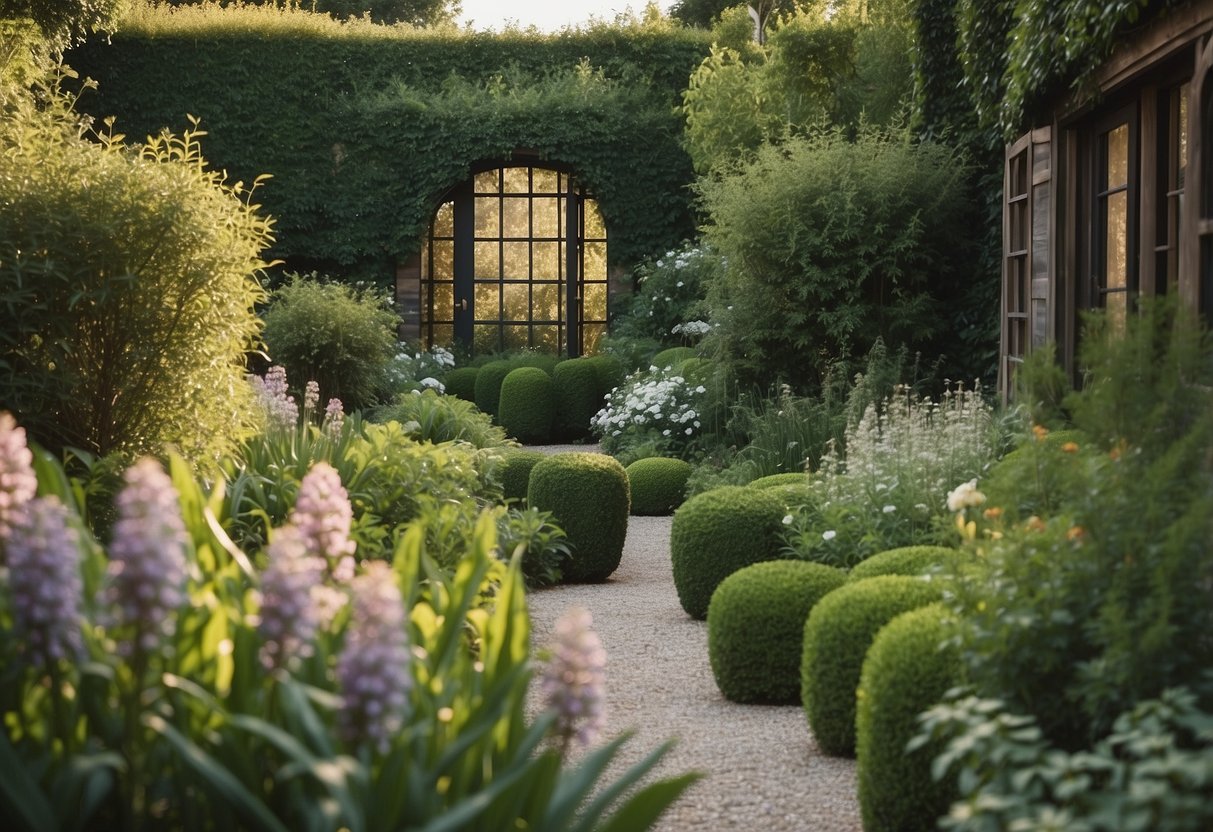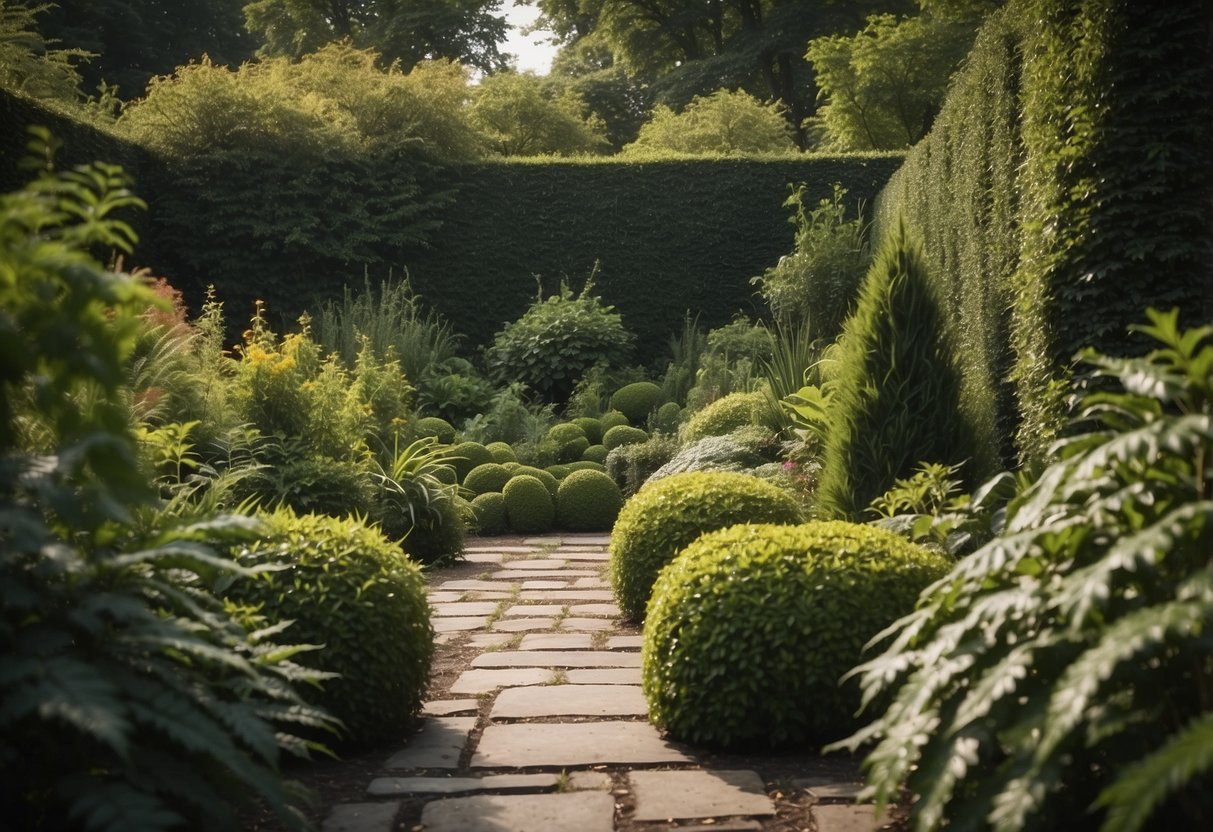Garden Privacy Plant Ideas: Transform Your Outdoor Space
Creating a private, serene garden space is all about choosing the right plants. Whether you’re looking to block out noisy neighbors or simply design a secluded retreat, the right selection can make a world of difference. Adding privacy plants to your garden can transform your outdoor area into a peaceful haven.

From tall hedges to compact shrubs, there’s a variety of options to fit any yard size and style. You can mix and match plants to not only enhance privacy but also add beauty and structure to your garden. Enjoy exploring different ideas and finding the perfect plants to suit your needs.
1) Bamboo

Bamboo is a great option for garden privacy. It’s fast-growing and can create a dense screen quickly. Many varieties are available to match different climates and garden spaces.
If you have a small space, try a narrow variety like Seabreeze bamboo. This bamboo is ideal for coastal areas and can withstand cold temperatures.
Consider adding bamboo around a rock garden for a tranquil space. This creates privacy and enhances your garden’s beauty.
To improve privacy further, you can plant bamboo in containers. This method lets you control its growth and maintain boundaries.
2) Boxwood

Boxwood is an excellent choice for creating garden privacy. It is an evergreen shrub that keeps its lush green foliage all year round.
You can shape boxwood into hedges, which can act as natural screens. These hedges are perfect for defining garden boundaries and blocking unwanted views.
Boxwood can also be used in combination with other plants to create beautiful and functional garden spaces. They pair well with shade plants like heuchera and coleus, which add color and texture.
For more ideas and tips on using boxwood in your landscaping, visit Veranda’s boxwood landscaping ideas.
3) Clumping Bamboo

Clumping bamboo is an excellent choice for garden privacy. Unlike running bamboo, it grows in tight clusters, making it non-invasive. This means it won’t take over your garden.
You can use clumping bamboo to create a natural privacy screen. It can grow up to six meters tall in just a few years, providing instant coverage.
Some popular varieties include the Chinese dwarf bamboo, which is great for small spaces. For a bushy look, consider the Multiplex bamboo, which forms a dense living wall.
Your garden can benefit from the beauty and functionality of clumping bamboo.
4) Holly

Holly trees are a great choice for adding privacy to your garden. They are evergreen, meaning they keep their leaves year-round. This gives you constant coverage and privacy.
Some popular varieties include American holly and Nellie Stevens holly. American holly can grow up to 50 feet tall, while Nellie Stevens holly reaches about 30 feet.
These trees also have glossy green leaves and bright red berries, adding a touch of color to your garden. They are also quite hardy and can withstand various weather conditions.
5) Evergreen Clematis

Evergreen Clematis is a lovely choice for garden privacy. This plant is a woody, evergreen vine that climbs beautifully, making it perfect for covering fences or trellises.
With varieties like Clematis cirrhosa, you can enjoy winter blooms. They have fragrant, creamy-white flowers that can truly brighten up a dull winter garden.
Plant Evergreen Clematis in full sun to part shade. It thrives in USDA Hardiness Zones 7-9. Remember to provide appropriate support to help these vines flourish and create stunning green architecture.
6) Italian Cypress

Italian Cypress is an excellent choice for adding privacy to your garden. This tree can grow up to 40 feet tall and is known for its slender shape.
You can use it to create a green wall or a natural screen in your backyard. Italian Cypress works well in sunny spots and can tolerate some shade.
Planting Italian Cypress around your garden creates a peaceful and private space. Its dense foliage offers great coverage, making it perfect for privacy and windbreaks. For more ideas, check out these garden designs with Italian Cypress.
7) Lavender

Lavender is a great choice for adding privacy to your garden. Its lush, dense growth makes it an effective natural barrier. Plus, it offers the added benefit of beautiful purple flowers and a calming scent.
You can plant lavender as a hedge along fences or pathways. It thrives in well-drained soil and lots of sunlight. For the best results, space the plants about 15 inches apart.
Lavender not only provides privacy but also attracts pollinators like bees and butterflies. This makes your garden a vibrant, lively space. Consider planting it near sitting areas for a peaceful, aromatic retreat.
8) Privet Hedge

Privet hedges are a popular choice for garden privacy. These evergreen shrubs can be grown as hedges or small, bushy trees, depending on the variety.
Privet plants grow fast and can be pruned without much trouble. You can plant them close together to create a lush green wall.
They are also easy to care for and maintain. Privet hedges can add a classic look to your garden.
9) Rose of Sharon

Rose of Sharon, also known as Hibiscus syriacus, is a wonderful choice for your garden privacy needs. This medium-sized flowering shrub can reach 8 to 10 feet in height and has a spread of 4 to 6 feet.
The blooms come in a variety of colors like red, pink, blue, purple, and white. These shrubs thrive in full sun to partial shade and are hardy in zones 5 to 8.
Planting a row of Rose of Sharon can create an effective and beautiful privacy screen in your garden. They also combine well with other shrubs such as viburnum and hydrangea.
10) Yew

Yew shrubs are a versatile choice for garden privacy. Known for their dense foliage, yews can be shaped easily, making them perfect for hedges.
The Irish yew variety can grow around 1 foot per year and reach heights of 4 to 10 feet in about ten years. Occasional pruning helps maintain its shape.
For a formal look, consider the Hick’s yew. It thrives in well-drained soil and can be trimmed meticulously.
Yew plants prefer full sun to partial shade, making them adaptable to various garden conditions. They are also evergreen, ensuring year-round privacy.
Choosing The Right Plants For Privacy

When selecting plants for privacy, it’s important to consider whether you want year-round coverage or seasonal blooms. Also, think about how fast you need them to grow and reach their full height.
Evergreen vs. Deciduous Plants
Evergreen plants keep their foliage throughout the year, providing constant privacy. This is useful if you want a steady barrier. Options like Bamboo and Oakland® holly are popular evergreens. Bamboo can grow between 15-25 feet tall and spread 8-15 feet wide, making it great for smaller, urban yards.
Deciduous plants, on the other hand, lose their leaves in winter. They often have vibrant colors in the fall. Trees like Canna Lily can serve as beautiful but temporary screens. Deciduous plants may require additional plantings to maintain privacy during colder months.
Height and Growth Rate Considerations
When planning your privacy screen, think about the plant’s mature height and how quickly it reaches this size. Fast-growing plants like Burgundy Queen can help quickly establish a privacy barrier. This climber can grow up to 30 feet long, which is ideal for getting coverage fast.
Slower-growing plants, though less aggressive, often have stronger root systems and longer lifespans. Holly, for instance, grows 15 to 20 feet tall and 12 to 15 feet wide. This makes it a solid choice for a long-lasting privacy hedge. Choose according to your timeline and how quickly you need protection.
Designing A Privacy Garden

Creating a private space in your garden involves using both plants and structural elements. Layering different types of plants can provide depth and coverage, while adding hardscaping elements enhances both privacy and aesthetics.
Layering Techniques
Using layers of plants gives your garden a natural look and ensures privacy. For example, you might plant tall trees like Arborvitae or Cypress at the back. These trees act as a green wall, blocking views.
In front of these trees, add medium-height shrubs such as Boxwood or Hydrangea. This layer provides additional privacy and softer lines.
Closer to where you sit, plant low-growing flowers and ground cover plants. Lavender and Pachysandra are good choices. This way, the garden feels inviting and hides you from prying eyes.
Tip: Use evergreens for year-round privacy and deciduous plants for seasonal interest.
Incorporating Hardscaping Elements
Hardscaping elements like fences, pergolas, and trellises are key to creating a private garden. A tall fence can be simple and effective, offering immediate privacy.
Decorative elements like latticework or iron panels can add visual interest and still block views. A pergola with climbing plants, such as Wisteria or Clematis, provides shade and seclusion.
Consider adding a stone bench or water feature. These not only enhance the look of your garden but also make it more functional and enjoyable. Using these elements strategically can help you create a cozy and hidden retreat in your backyard.
For more ideas on incorporating hardscaping, visit Garden Privacy Ideas and DIY Garden Privacy Ideas.
Maintenance Tips For Privacy Plants

Caring for privacy plants ensures they grow well and provide the desired screening. Key maintenance tasks include regular pruning to manage plant shape and size and controlling pests and diseases to keep plants healthy.
Pruning and Trimming
Pruning and trimming are essential to maintain the size and shape of your privacy plants.
- Regular Pruning: Trim plants annually to encourage dense growth and shape them effectively. This is especially important for hedges and shrubs.
- Timing: Early spring is the best time for pruning many privacy plants. For flowering plants, prune right after they bloom.
- Tools: Use sharp and clean tools like shears and loppers. This helps prevent damage and disease.
- Technique: Cut at a 45-degree angle, just above a bud facing outward. This promotes healthy growth.
Regular pruning helps maintain the structure and density of your plants, giving you the privacy you need.
Pest and Disease Control
Keeping your privacy plants free of pests and diseases is crucial for their health.
- Inspection: Check your plants regularly for signs of pests like aphids, mites, or caterpillars. Look for leaf discoloration, holes, or webs.
- Natural Remedies: Use eco-friendly solutions like neem oil or insecticidal soap. These are safe and effective for most common pests.
- Diseases: Watch for signs of disease, such as fungus or mold. Remove affected parts and use fungicide if necessary.
- Healthy Practices: Water plants at the base to avoid wetting the foliage, which can prevent fungal infections. Ensure proper spacing to allow air circulation.
Taking these steps helps keep your privacy plants healthy and vigorous, ensuring they thrive and provide the desired privacy.







